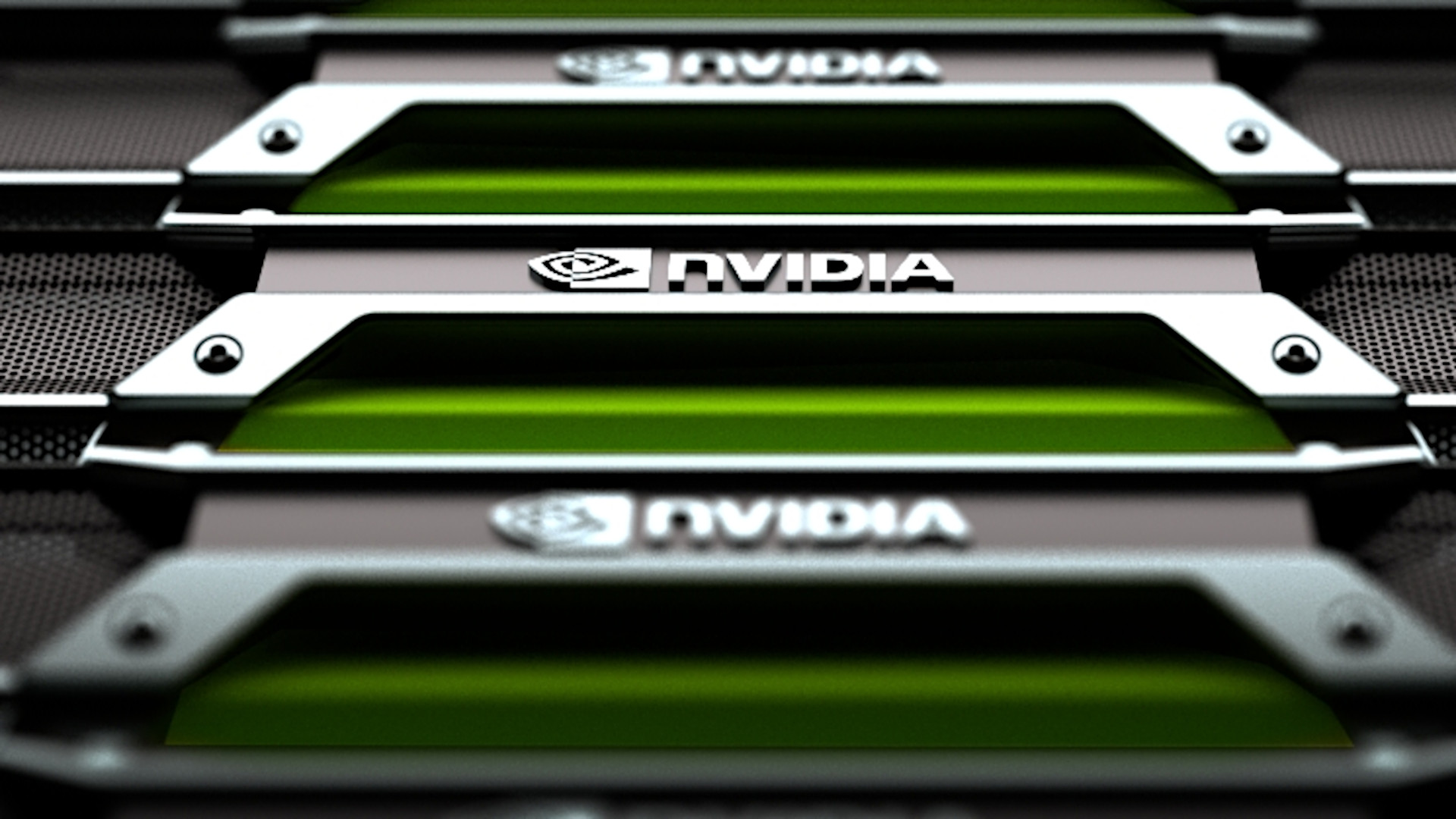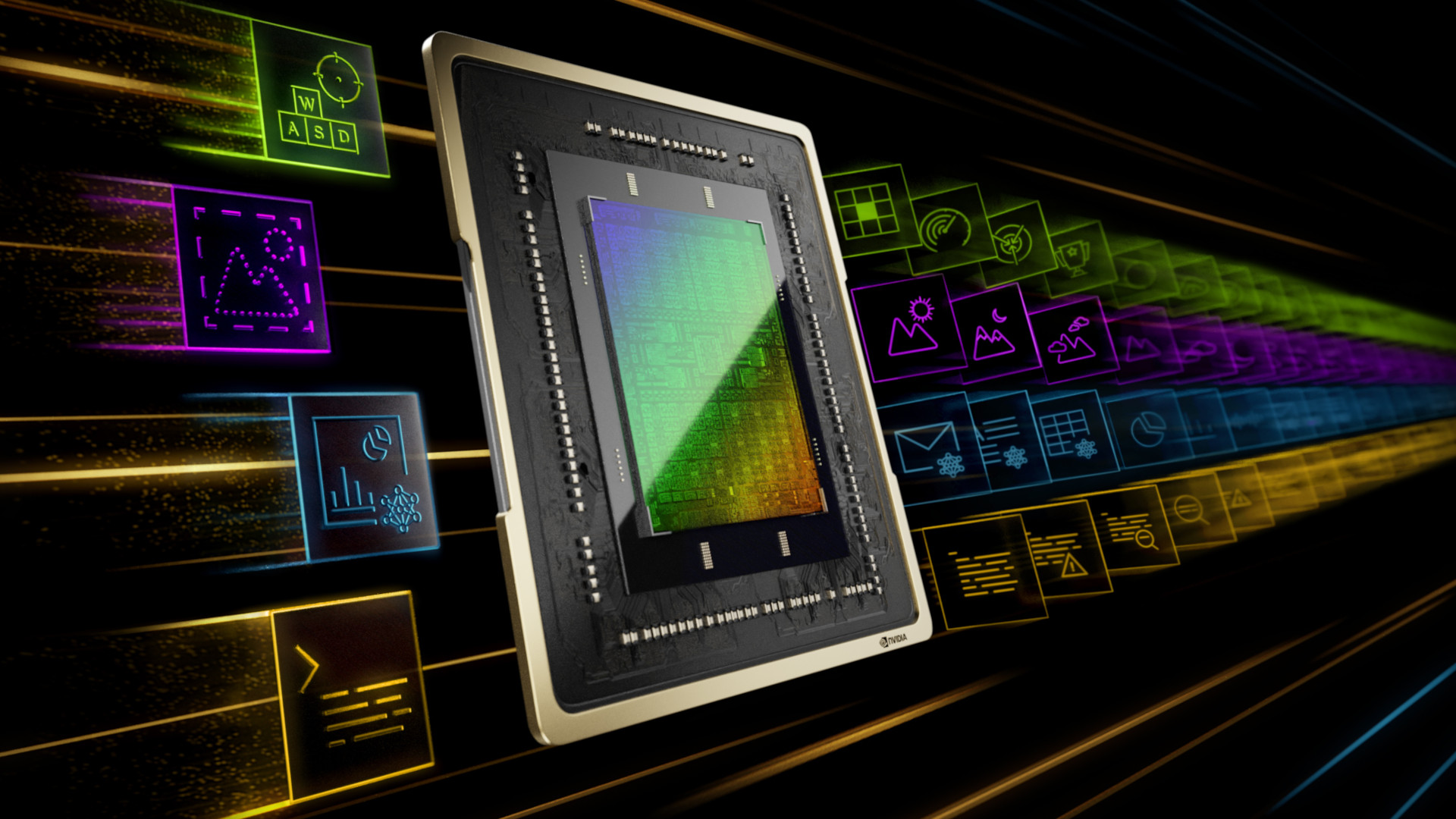Believe it or not, it’s already been nearly two years since the launch of the mighty RTX 4090, so it’s only a matter of time before the Nvidia GeForce RTX 5090 arrives to unseat it as in all likelihood the fastest graphics card you can buy. As ever in the lead-up to a new graphics card launch, we’ve had a steady drip feed of leaks and rumors about specs and performance, which have only accelerated in recent months as we move toward the expected release date of the card.
While we wait for the new flagship GPU from Nvidia to arrive, and no doubt take the crown as the best graphics card money can buy, you’ll find everything we currently know about the new graphics card below.
Nvidia GeForce RTX 5090 specs estimate
The latest Nvidia GeForce RTX 5090 specs rumors suggest the GPU will have 21,760 CUDA cores and 170 RT cores, with the highest memory bandwidth of any GeForce GPU.
| Nvidia GeForce RTX 5090 | |
| GPU | GB202-300-A1 |
| CUDA cores | 21,760 |
| SMs | 170 |
| RT cores | 170 |
| Boost clock | 2.9GHz |
| Interface | 16x PCIe 5.0 |
| VRAM | 32GB GDDR7 |
| Memory interface | 512-bit |
| Memory bandwidth | ~1.7TB/s |
| L2 cache | 128MB |
| Power draw | 600W |
| Power connector | 1 x 16-pin |
As the RTX 5090 will be built on a new architecture, it will be powered by one of the new GeForce RTX 50 GPU dies. Naturally, as the flagship of its family, it’s likely to be based on the largest and most powerful of the entire stack, which is expected to be called GB202, with the variant in the RTX 5090 expected to be called the GB202-300-A1.
The full Nvidia GB202 specs are expected to include 24,576 CUDA cores if all its parts are fully enabled, spread across 192 streaming multiprocessor (SM) units, giving it 192 RT cores. However, according to a leak from regular tech leaker kopite7kimi, the RTX 5090 GPU will have 22 of its SMs disabled, giving it 21,760 CUDA cores and 170 RT cores. This leaves room for Nvidia to potentially launch a new GeForce RTX 5090 Ti, or 5090 Ultra, card at a later date, with more SMs enabled.

As a point of comparison, the GeForce RTX 4090 has 128 SMs, giving it 16,384 CUDA cores, meaning the RTX 5090 potentially has a lot more parallel processing power. However, this isn’t an apples-to-apples comparison, as the RTX 5090 will be built using the Blackwell architecture, rather than the Ada Lovelace architecture used by the 4090, and it may not have the same performance per core.
Another big rumor about the RTX 5090 specs concerns the memory bandwidth. According to the rumor mill, the RTX 5090 memory will be GDDR7, and attached to a super-wide 512-bit bus, which is much wider than the RTX 4090’s already fat 384-bit interface. There’s potential for an enormous amount of memory bandwidth here. If the GDDR7 VRAM runs at 28Gbps, for example, then the memory bandwidth could be 1.79TB/s, which is huge compared to the RTX 4090’s bandwidth of just over 1TB/s.
Not only that, but the RTX 5090 is also rumored to be coming with a massive 32GB of GDDR7 VRAM, giving it plenty of headroom for professional work, as well as gaming at very high resolutions with all the settings maxed out.
There is a potential cost to all this power, though, which is the RTX 5090 power draw. The GPU is rumored to draw around 600W, which is the same limit as a single 16-pin power cable, leading to speculation that the RTX 5090 needs two 16-pin power cables. However, this is unlikely, given that the card will also get some power from the PCIe slot. That said, the extra power required by seriously overclocked RTX 5090 cards may push them over that cliff, and require two sockets – we’ll have to wait and see.
The GeForce RTX 5090 is also expected to be Nvidia’s first gaming GPU to use the new 16x PCIe 5.0 interface. If that’s the case, you’ll still be able to install it in a PCIe 4.0 or even PCIe 3.0 slot, but you won’t get the full amount of bandwidth, which is likely to restrict performance on a PCIe 3.0 motherboard.
There should also be RTX 5090 DisplayPort 2.1 outputs, allowing it to properly support gaming monitors with ever higher resolutions and refresh rates – such as the latest 240Hz, 4K OLED screens. Controversially, however, it appears that the RTX 5090 power connector will continue to be the 12VHPWR power input found on the current RTX 4000 series, albeit with the more modern 12V-2×6 design.
Finally, the RTX 5090 clock speed has been rumored to be significantly higher than that of the RTX 4090, with a potential boost clock of 2.9GHz, while the GPU is expected to be equipped with 128MB of L2 cache.

Nvidia GeForce RTX 5090 release date window
The RTX 5090 release date window is expected to be January 2025, based on rumor and speculation, as Nvidia hasn’t officially announced a date.
The RTX 5090 was originally expected to launch in Q4 2024, along with the RTX 5080, as this would be around two years after the October 22 release date of the RTX 4090. However, more recently we’ve seen reports that suggest the RTX 5080 release date could be earlier than the RTX 5090, though equally other rumors have hinted at both cards launching at similar times.
Lately, though, there have been rumors that both GPUs will be coming out later, resulting in an RTX 5090 release date in 2025, with rumors that Nvidia will announce the GPU in January 2025 at CES. This is the release window we’re expecting right now.
The reason for this particularly unclear situation right now is that Nvidia simply doesn’t need to release a faster product to compete with its competition. The RTX 4090 remains far and away the fastest graphics card you can buy on average – the AMD RX 7900 XTX can be as fast or faster in some games but it’s not as good at ray tracing – and AMD’s next-generation RDNA 4 graphics cards aren’t expected to arrive until next year, according to the latest rumors. As such, Nvidia can just sit pretty continuing to sell all the 4000 series cards it likes before dropping its 5000 series products.
Nvidia GeForce RTX 5090 price estimate
The RTX 5090 price is estimated to be between $1,599 and $1,999, making it a match or more expensive than its predecessor, the RTX 4090.
Compared to current offerings, GeForce RTX 50 prices may be higher owing to increased manufacturing costs imposed by TSMC. While it’s entirely possible that Nvidia could opt to take this extra expenditure on the chin and not pass it on to consumers, there’s no guarantee.
That said, with GeForce GPUs now making up just a sixth of Nvidia revenue, with data center making up a much larger portion, the company’s pricing strategy could change as it looks to keep gamers sweet with more appealing pricing while making its big money on AI products.
Nvidia GeForce RTX 5090 benchmark estimates
Our Nvidia GeForce RTX 5090 benchmark estimates put the GPU ahead of every graphics card currently available on the market, including the RTX 4090.
While it’s something of a given that the GPU will be the fastest around, we won’t know how much better it’ll be versus its counterparts until release. However, early rumors of its CUDA core count and faster memory would hint at it being over 50% faster.
In support of that, some rumormongers suggest that RTX 5090 performance will be 60 or 70% faster than the RTX 4090, but it’s unclear whether this is with ray tracing enabled or disabled. Complicating matters further, this could also be with Nvidia DLSS 3 enabled or as-yet unannounced performance-enhancing features, as Nvidia likes to do when it releases its own benchmark figures.
In the meantime, if you want to buy a new graphics card now, check out our GeForce RTX 4080 Super review, where we take Nvidia’s latest high-end GPU for a spin. It corrects the big pricing faux pas Nvidia made with the original RTX 4080, while also offering decent 4K gaming performance for $999.

 1 month ago
54
1 month ago
54







![Anime Reborn Units Tier List [RELEASE] (November 2024)](https://www.destructoid.com/wp-content/uploads/2024/11/anime-reborn-units-tier-list.jpg)


